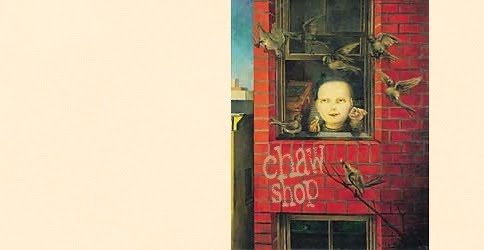In the Trenches
In a haunting scene midway through The Silver Chair, the fourth book published in the Chronicles of Narnia series, three adventurers search the ruins of a giants’ city for a fabled stone carving that is supposed to instruct them on what to do next. C.S. Lewis writes, “In order to understand what followed, you must keep on remembering how little they could see.” In the face of blowing snow, one of the human children, Jill, falls into a deep trench, or “sunken lane,” with vertical stone walls rising up on either side. She begins exploring, but discovers that after a couple of sharply angled turns it comes to a dead end, and she climbs back out. There are several other similar crevasses or grooves on “The Hill of the Strange Trenches,” as Lewis refers to it, but they all appear to lead nowhere. It’s only later that the adventurers look back at the landscape they’ve just traveled and realize that the trenches are in fact the stone carving they sought – they’re actually massive letters engraved into the city’s foundation.
The Narnia books may be creepy propagandistic screeds, but images like "The Hill of the Strange Trenches" are the reason that I can never fully exorcise them from my defiant, sinful mind. And, in addition to being fantastically imaginative and unforgettable, this particular image has the added bonus of doubling, for me, as a great visual metaphor for the contrast between reading a work-in-progress piecemeal and reading a completed manuscript or published book. When I read pages or even chapters from an unfinished novel, I am down in the trenches, noticing the sharp angles, wondering if the path is leading anywhere. When I read a finished book, I am looking at the whole hill, and the message is either spelled out there, or it isn’t.
Let me break this down. In a traditional creative writing class, a novel of 300 pages takes 10 weeks to workshop with submissions of 30 pages at a time. That’s if the writer gets to submit every week, which in my experience is rare. It’s more likely that writers will submit, say, every other week, which means we’re looking at 20 weeks – five months. Five months of readers’ patient, thoughtful attention to detail. Five months of limitless opportunities to forget what was set up on page 2.
It’s obvious to me that this is an artificially slow pace of reading, imposed not by the necessities of the work but by the necessities of the classroom. When reading for pleasure, it does not take five months to get through a short novel. (It takes me maybe four days; I’d estimate that even more methodical readers don’t need much longer than a couple weeks.)
But the problem isn’t just that the pace is artificial. Reading a novel on this schedule also mimics and reinforces the writer’s own myopic experience of the work. A comma can loom in bizarre significance, while the dramatic events of two chapters ago can fade like the memory of a dream. Foreshadowing becomes meaningless when you don’t reach its object within that week’s span of pages. This leads to a strange state of affairs, in which, amid an array of contradictory recommendations to the author, many of which seem to miss the point, the one constant is this: “Keep exploring.” Encouragement isn’t a bad thing, despite what Flannery O’Connor might say about it. Many writers, myself included, need encouragement while penning a first draft. But the encouragement given by instructors and peers in a writing workshop should never be confused with serious, comprehensive criticism.
The pace at which literary agents, editors, and paid book reviewers read is an artificial pace, too: a pace imposed by the necessities of business. This pace is to read the entire work as quickly as possible – in the span of a day or, at most, a weekend. This is not a weekend spent devoted to patient, thoughtful attention to detail. This is a weekend spent building a case: for or against.
...next up: book reports
OR... back to: what's a query for, anyway? AND the art of the pitch?? AND literary rebellions & literary excuse-making AND thinking about answers AND making connections AND victims vs. passive characters AND "finding your voice"

No comments:
Post a Comment